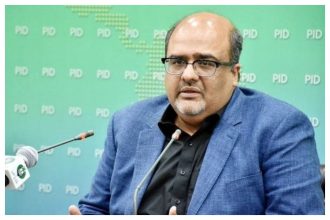On August 15, 2025, the Pakistan Stock Exchange’s (PSX) KSE-100 Index experienced relatively stable trading, reaching an intraday high of 147,534.41 (+1,005.11 points, or 0.69%) before dropping to a low of 146,894.62 (-35.22 points, or 0.02%).
Analysts attributed this stability to strong corporate earnings, active mutual fund participation, and a generally optimistic outlook for Pakistan’s economy, despite a 0.32% decline to 146,529.31 on the previous Wednesday.
The market is currently experiencing range-bound activity due to liquidity from mutual funds and the ongoing earnings season. Moody’s credit rating upgrade has already been accounted for. The improved earnings results and expectations of economic recovery are driving market activity. The State Bank of Pakistan’s (SBP) Monetary Policy Report projects GDP growth of 3.25% to 4.25% for FY26, with reserves expected to reach $15.5 billion by December.
Read: Moody’s Upgrades Pakistan’s Credit Rating
Moody’s upgraded Pakistan’s credit rating from Caa2 to Caa1 on August 13, citing improvements in external positions and reforms related to the IMF Extended Fund Facility (EFF). This upgrade follows similar actions by S&P and Fitch, which were influenced by Prime Minister Shehbaz Sharif’s efforts in fiscal consolidation. Despite these positive developments, Moody’s noted concerns about weak debt affordability and governance risks. Additionally, Pakistan’s equity market led the world in USD returns for FY24–FY25, outperforming India’s BSE Sensex, which gained 3.2%, and China, which gained 14.8%.
The KSE-100’s stability reflects confidence in reforms and earnings, with the SBP’s 11% policy rate supporting inflation control. However, analysts like Tariq warn of potential consolidation if global risks rise. The market’s resilience, bolstered by a $7 billion IMF bailout, could attract further investment, shaping Pakistan’s economic trajectory.
The KSE-100’s steady performance and Pakistan’s top global equity returns signal economic recovery, impacting investor confidence. Continued reforms are key to sustaining growth.






